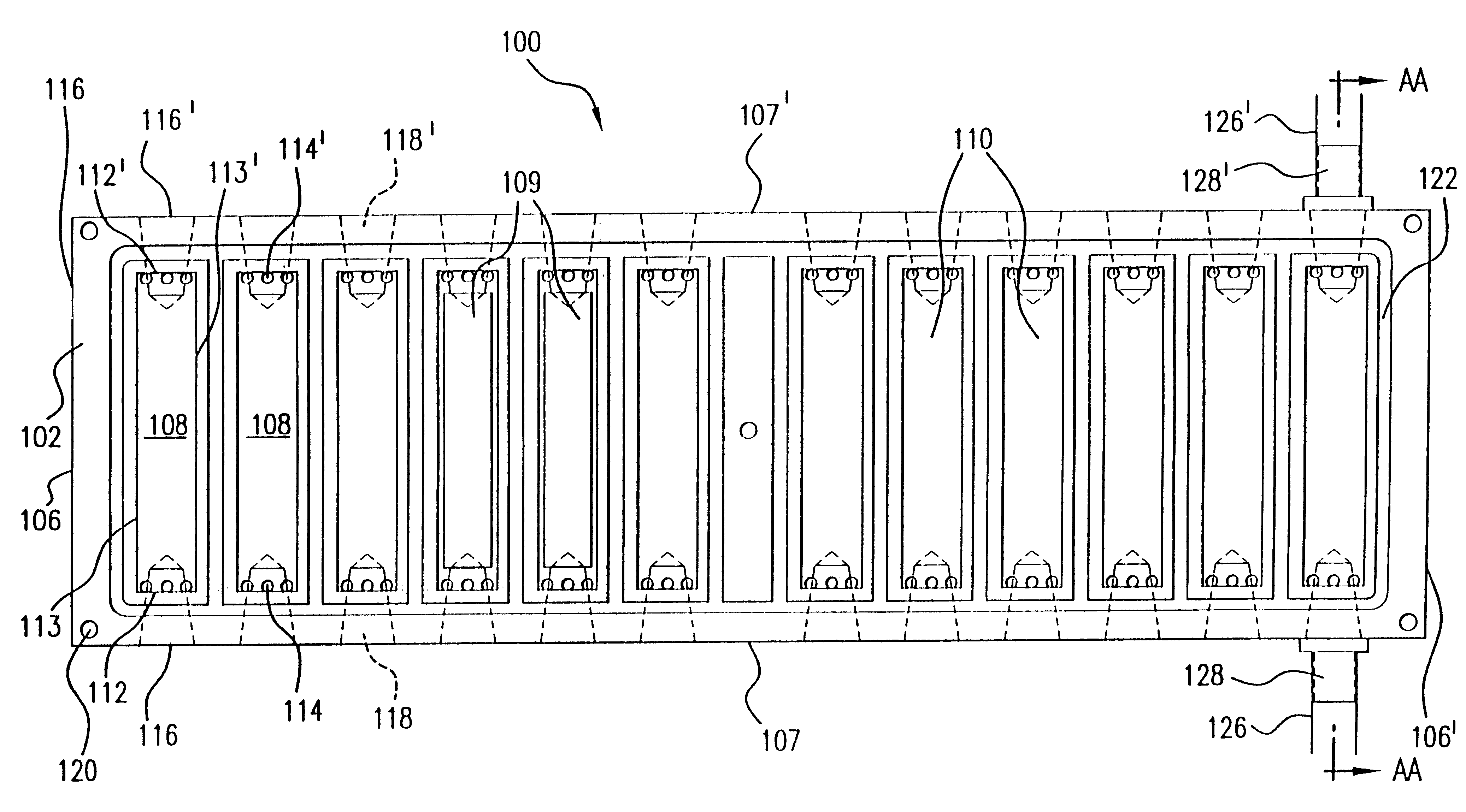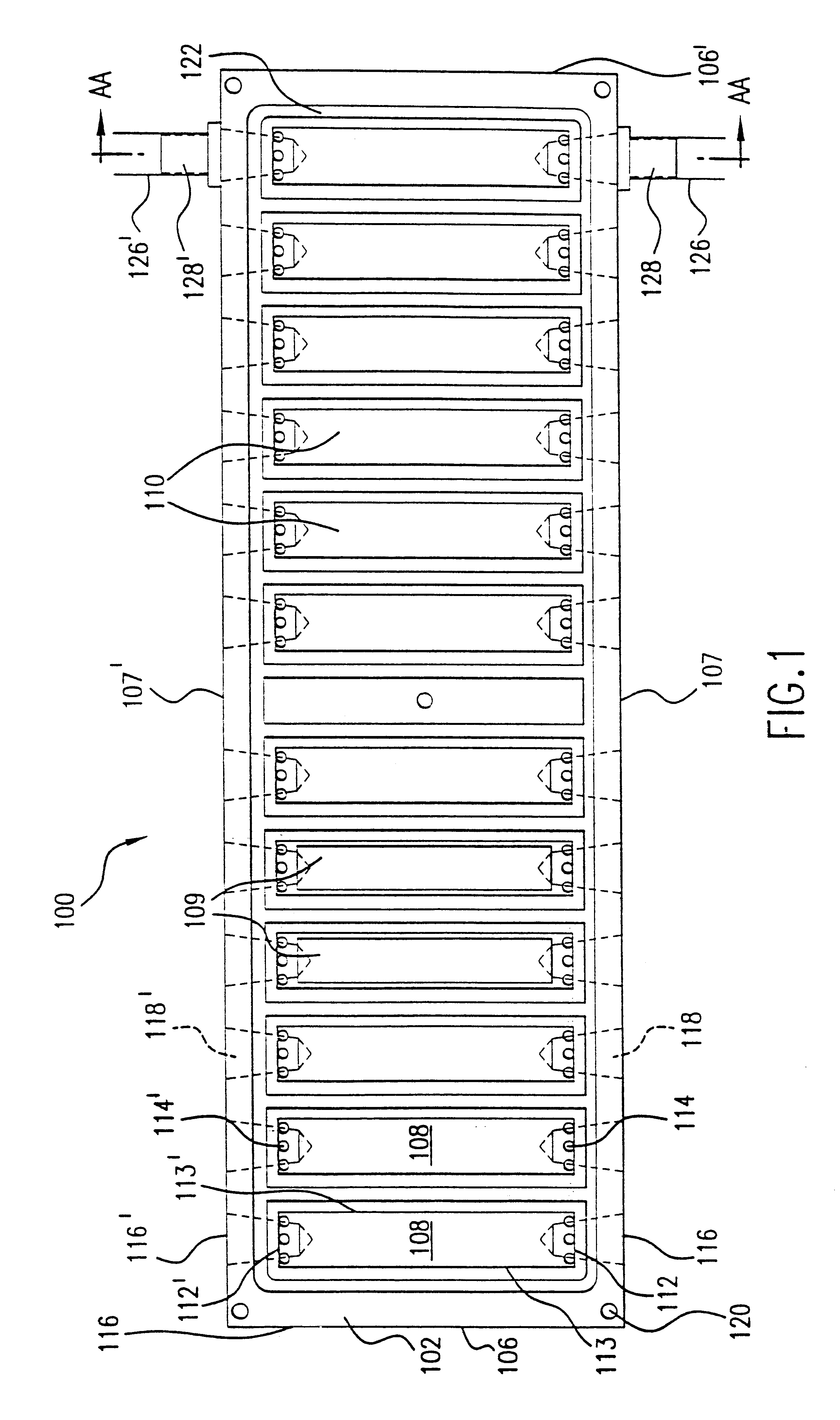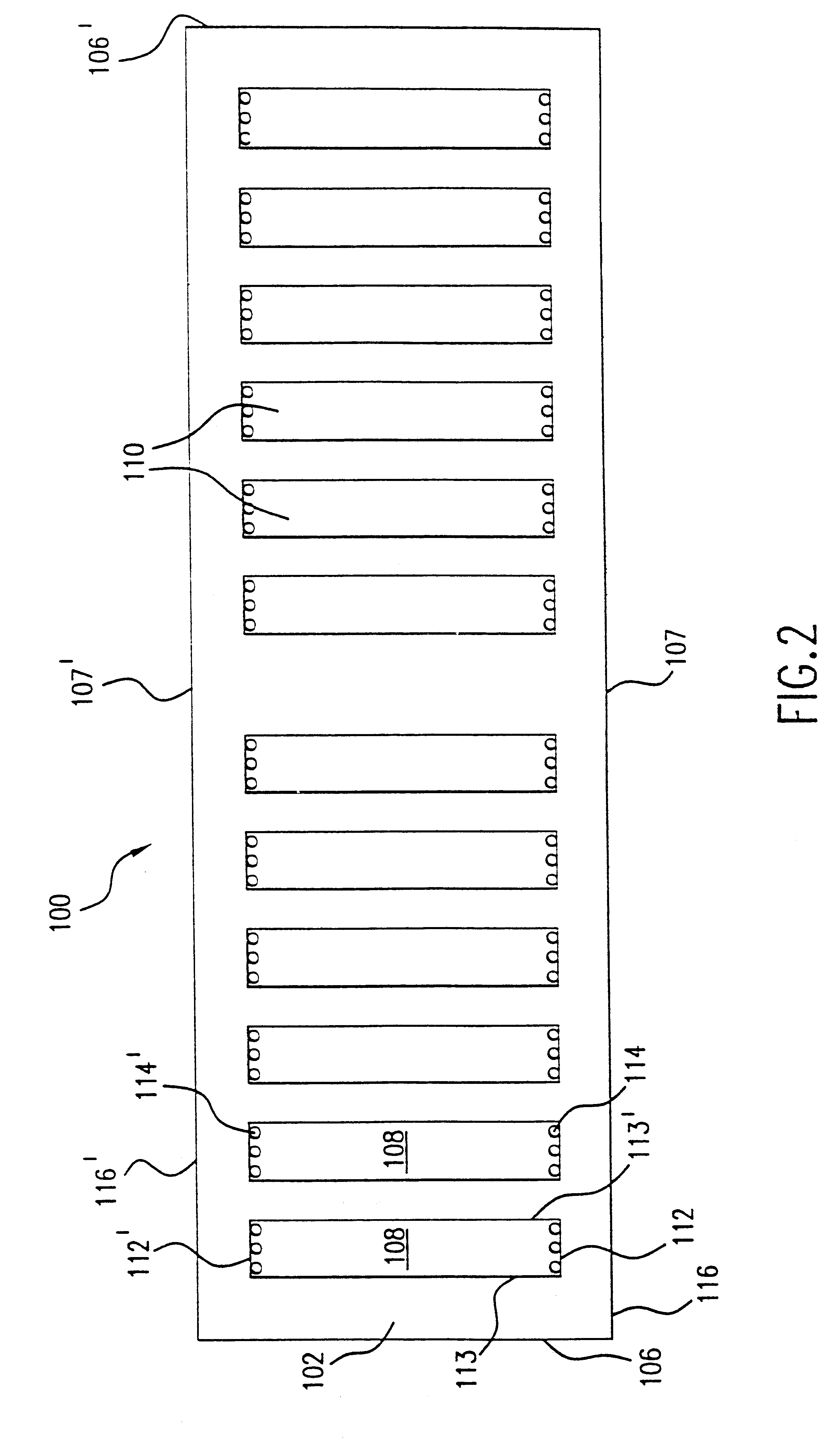Biofilm growth device
a growth device and biofilm technology, applied in the field of biofilm growth devices, can solve the problems of inability to meet the needs of production, etc., to achieve the effect of reducing product quality, reducing operating efficiency, and general operational difficulties in the system
- Summary
- Abstract
- Description
- Claims
- Application Information
AI Technical Summary
Problems solved by technology
Method used
Image
Examples
Embodiment Construction
In one desired aspect of the present invention, a stainless steel tray 100 defines twelve chambers 108, as shown in FIGS. 1, 2 and 4. Tray 100, a clear plastic cover 124, a gasket 119, twelve stainless steel coupons 109 (approximately two and one half inches by one half inch), twenty four pieces of flexible rubber tubing, five pairs of forceps, and four carboy stopper assemblies were cleaned, autoclaved and allowed to dry overnight in a drying oven. The cleanings were done in a manner known in the art. For instance, the coupons 109 were cleaned with warm water and detergent and placed in a ten percent solution of bleach overnight. They were then rinsed with distilled water, cleaned with detergent, placed in a one percent acetone solution and sonicated for thirty minutes.
In accordance with the agents being investigated, various protocols were used as indicated below:
Pure Culture / Defined Mixtures of Laboratory Bacteria
Four nine-liter carboys that accept the stopper assemblies above we...
PUM
| Property | Measurement | Unit |
|---|---|---|
| optical density | aaaaa | aaaaa |
| conducting | aaaaa | aaaaa |
| corrosion | aaaaa | aaaaa |
Abstract
Description
Claims
Application Information
 Login to View More
Login to View More - R&D
- Intellectual Property
- Life Sciences
- Materials
- Tech Scout
- Unparalleled Data Quality
- Higher Quality Content
- 60% Fewer Hallucinations
Browse by: Latest US Patents, China's latest patents, Technical Efficacy Thesaurus, Application Domain, Technology Topic, Popular Technical Reports.
© 2025 PatSnap. All rights reserved.Legal|Privacy policy|Modern Slavery Act Transparency Statement|Sitemap|About US| Contact US: help@patsnap.com



